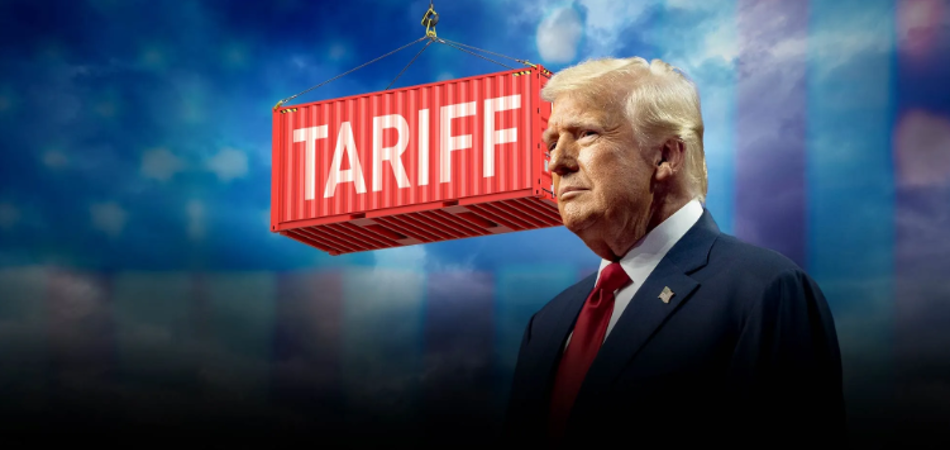In an increasingly interconnected world, international trade drives economic growth and shapes global relationships. Yet, trade policies—particularly tariffs—remain among the most hotly debated economic tools. Every time tariff news makes headlines, it sends ripples through financial markets, business communities, and political circles. But what exactly are tariffs, why do they matter so much, and how does tariff news influence economies worldwide?
This article breaks down everything you need to know about tariff news, from what tariffs are and how they work to their real-world effects on businesses, consumers, and global relations.
What Are Tariffs?
A tariff is a tax or duty imposed by a government on imported goods and services. It raises the cost of foreign products, making them less competitive compared to domestic alternatives. Governments use tariffs to protect local industries, generate revenue, or retaliate against unfair trade practices from other nations.
There are two main types of tariffs:
- Ad valorem tariffs – based on a fixed percentage of the product’s value (e.g., 10% on imported steel).
- Specific tariffs – based on a fixed fee per unit, regardless of the product’s price (e.g., $50 per imported car).
When tariff news hits the market—such as an increase or removal of tariffs—it can instantly impact prices, supply chains, and stock markets.
Why Tariff News Matters
Tariff news is not just about policy; it affects everyone—from large corporations and small businesses to everyday consumers. Here’s why it’s so significant:
- For governments, tariffs serve as a tool for political leverage and economic protection.
- For businesses, they influence supply chain costs, sourcing decisions, and profit margins.
- For consumers, tariffs can mean higher prices on imported goods and everyday items.
When countries like the United States, China, or members of the European Union announce new tariff measures, it can shift global trade flows and trigger economic uncertainty. That’s why tariff news is closely followed by economists, investors, and policymakers worldwide.
Recent Global Tariff News
In recent years, tariff news has dominated headlines as global trade tensions rise. Some of the most notable developments include:
1. U.S.–China Trade Relations
The ongoing economic rivalry between the U.S. and China continues to generate significant tariff news. Starting in 2018, the U.S. imposed tariffs on billions of dollars’ worth of Chinese goods, citing unfair trade practices and intellectual property theft. China retaliated with tariffs of its own.
While some tariffs have since been rolled back or suspended, tensions remain high. Each new announcement—whether easing restrictions or introducing new ones—affects global markets, manufacturing, and consumer goods prices.
2. European Union and Steel Tariffs
The EU has faced challenges over steel and aluminum tariffs, especially during trade disputes with the United States. News of tariff adjustments in these industries often leads to market fluctuations, as steel is a core component of global manufacturing.
3. Emerging Economies Adjusting Trade Policies
Countries like India, Brazil, and Indonesia have recently revised tariff structures to boost domestic manufacturing and reduce dependency on imports. This tariff news highlights how developing nations are using tariffs to strengthen local economies amid global competition.
The Economic Impact of Tariff News
Whenever tariff news breaks, it creates ripple effects across global economies. Let’s explore how tariffs influence key economic sectors:
1. Businesses and Supply Chains
When tariffs increase, companies that rely on imported materials or components face higher costs. Many respond by:
- Raising prices on finished goods.
- Shifting production to other countries with lower tariffs.
- Absorbing losses to remain competitive.
For example, the automobile industry has been hit hard by global tariff changes, as modern cars rely on complex international supply chains.
2. Consumers
Tariffs indirectly affect consumers through higher retail prices. When importers and manufacturers face additional costs, those expenses are often passed down to shoppers. Electronics, clothing, and food items are common examples where tariff news can quickly translate into price increases at stores.
3. Financial Markets
Investors pay close attention to tariff news because it affects company earnings, commodity prices, and market confidence. Stock markets often react immediately to tariff announcements, especially in sectors like manufacturing, technology, and agriculture.
4. Employment
In some cases, tariffs protect domestic jobs by shielding local industries from foreign competition. However, they can also hurt employment in export-dependent sectors when other countries retaliate with their own tariffs.
Winners and Losers of Tariff Policies
Not all news about tariffs is negative. In fact, some sectors benefit while others struggle.
Winners:
- Domestic manufacturers who gain an advantage over foreign competitors.
- Governments collect tariff revenues.
- Local workers in industries that are protected from cheaper imports.
Losers:
- Import-dependent businesses face higher input costs.
- Exporters are affected by retaliatory tariffs from other countries.
- Consumers may see price hikes on imported goods.
This balance between protectionism and open trade defines much of the tariff news that shapes modern economic policy.
Tariffs and Global Trade Relations
Tariffs are often used as diplomatic tools in international negotiations. Countries impose or lift tariffs to gain leverage in trade deals or respond to geopolitical tensions.
For example:
- The U.S. and Mexico have used tariff threats to negotiate immigration and trade agreements.
- The UK, after Brexit, has restructured its entire tariff system to reflect its independence from the European Union.
- The World Trade Organization (WTO) regularly mediates disputes over tariff applications and compliance.
Thus, tariff news often goes beyond economics—it reflects the shifting dynamics of global power and policy.
The Future of Tariff News: Trends to Watch
As globalization evolves, the landscape of trade and tariffs is changing rapidly. Here are some trends shaping future tariff news:
1. Green Tariffs and Environmental Policies
More countries are introducing carbon border taxes—tariffs on imports from countries with weaker environmental regulations. This move encourages global climate responsibility and fair competition.
2. Digital Trade and Data Tariffs
As the digital economy expands, policymakers are debating new tariffs on digital goods and cross-border data transfers. The next wave of tariff news may center on virtual trade rather than physical goods.
3. Supply Chain Realignment
The COVID-19 pandemic and geopolitical tensions have shown the risks of over-reliance on certain countries for critical supplies. Many nations are now adjusting tariffs to encourage domestic manufacturing and regional trade alliances.
4. Technology and Automation
Automation and AI may reduce the traditional benefits of tariffs by lowering the need for cheap foreign labor. Future tariff news could focus more on intellectual property, software exports, and tech regulations.
How to Stay Updated on Tariff News
For businesses and investors, staying informed about tariff news is essential. Here’s how to stay ahead:
- Follow official trade departments such as the U.S. Trade Representative (USTR) or the European Commission.
- Monitor financial media like Bloomberg, Reuters, and CNBC for real-time updates.
- Consult trade analysts or global economic forums for forecasts and policy insights.
Understanding tariff news helps businesses plan ahead, adjust supply chains, and anticipate market shifts.
Conclusion
Tariff news plays a critical role in shaping global trade, economics, and everyday life. Whether it’s a major trade dispute between world powers or a policy change in a developing nation, every tariff decision influences prices, jobs, and international relations.
In a world where economies are deeply interconnected, staying informed about tariff news isn’t just for economists—it’s essential for anyone affected by global commerce. As trade policies evolve, tariffs will continue to serve as both tools of protection and instruments of negotiation in the complex web of international trade.
Ultimately, understanding tariff news means understanding how the global economy works—and how decisions made in one country can ripple across the world.





